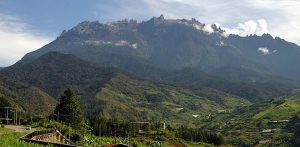
Nepenthes rajah – Unique carnivorous plant!
Recommended for Foundational Grades
Nepenthes rajah – Today, let us read about the world’s largest pitcher plant.
Have you ever read about carnivorous plants?
These are plants that derive some or most of their nutrients from trapping and consuming animals or insects. They include pitcher plants, flypaper traps, etc.
Fun facts about Nepenthes rajah!
Where is Nepenthes rajah found?
It is found in Mount Kinabalu and neighbouring Mount Tambuyukon in Sabah, Malaysia.
What is it famous for?
Nepenthes rajah is most famous for the giant urn-shaped traps it produces, which can grow up to 41 cm high and 20 cm wide, and can hold 3.5 litres of water.
How does Nepenthes rajah capture and eat its prey?
It uses the traps to capture insects and sometimes, frogs, etc. These creatures then get digested in the traps with the plant’s digestive juices.
What else is unique about this plant?
- Despite eating insects for food. Nepenthes rajah pitchers also play host to a large number of other organisms like flies and spiders.
- Many of these organisms are so dependent on them that they cannot survive elsewhere!
Due to its unique looks and nature, the Nepenthes rajah is sought after by plant collectors. It is also classified as an endangered species.
Curious Times is a place where we’re passionate about what we do. Consequently, we work hard every day to give our young readers the most outstanding possible experience and information. We also use Curious Times Weekly, The Curious Magazine, and My Expressions to communicate with our audience. As a result, our content is exciting and interesting for our readers.
School children from all around the world appreciate and enjoy our materials. So, we’re always looking for ways to improve, and are curious to hear from you. This, above all, assists us in providing better service to you.
Thus, what sort of news stories capture your interest? In the comments section below? Please share your thoughts! For the simple reason that we enjoy hearing from our young readers. The following social media platforms allow you to communicate with us: WhatsApp, Instagram, Facebook, Youtube, Twitter, and LinkedIn.
0 (Please login to give a Curious Clap to your friend.)



